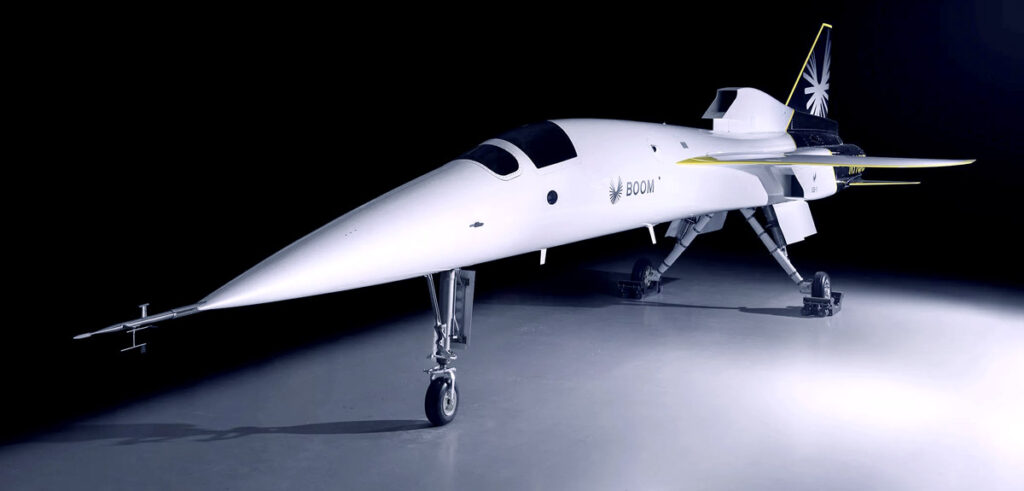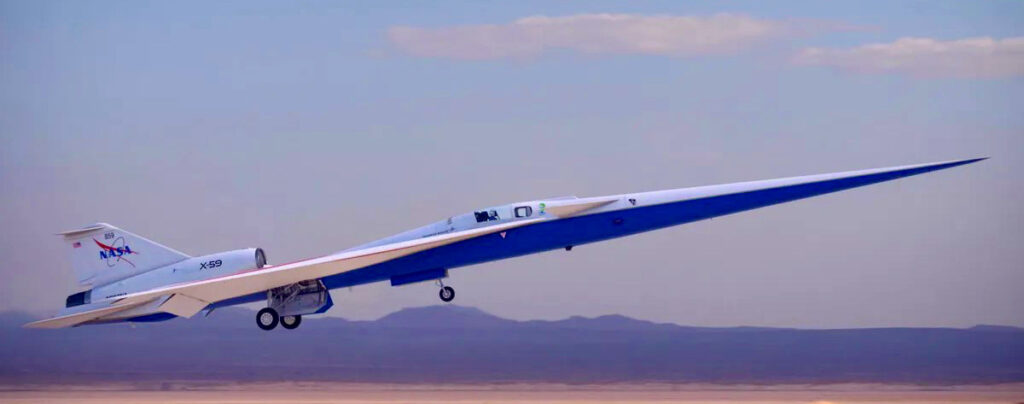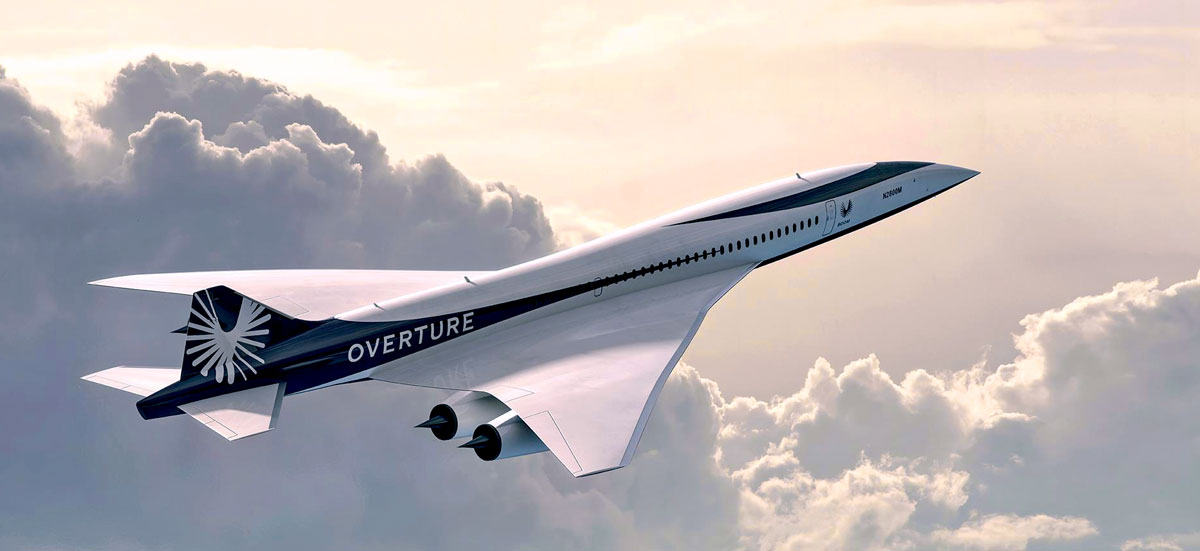Supersonic Airliners: A New Era
The prototype of the supersonic passenger plane, Overture, completed its first flight.
The supersonic aircraft XB-1, created by the American company Boom Supersonic, made its first flight over the Mojave Desert in California on March 22, 2024. This aircraft is the development that will allow for the creation of a new supersonic passenger airliner designed for intercontinental flights.
During the flight, the engineering team conducted an initial assessment of the aircraft’s flight characteristics, including testing its speed in flight and stability during landing at a high angle of attack.

During the landing approach, XB-1’s augmented reality visual overview system was also tested. The system displays high-resolution images from two cameras on the nose of the aircraft onto a display installed in front of the pilot. Additional indicators of position and flight trajectory are overlaid on the image. This system provides a better view during the landing phase, eliminating the need for a drooped nose, which had to be used on supersonic passenger aircraft of previous generations, such as the Concorde and Tu-144.
The main goal of the XB-1 test flights is the development and validation of technologies that will be used in the supersonic passenger jet Overture. According to the developers, it will fly twice as fast as modern airliners: for example, from New York to London in just 3.5 hours.
The future supersonic passenger jet Overture will be designed to carry up to 80 passengers at a cruising speed of 1.7 Mach and will use environmentally friendly synthetic fuel.
Boom Supersonic has not disclosed the delivery timeline for the first Overture jets, but notes that they already have 130 orders and pre-orders from American Airlines, United Airlines, and Japan Airlines, and the aircraft “continues to progress towards production.”

NASA and Lockheed Martin are also working on bringing supersonic passenger planes back to the skies. A ceremony was recently held to present the fully assembled and ready-to-test experimental supersonic aircraft demonstrator X-59 QueSST. It is designed to test new “quiet” supersonic flight technology. Scientists hope to demonstrate with this aircraft that new technologies can avoid the deafening noise created by such planes when breaking the sound barrier.
The demonstration took place at the Lockheed Martin Skunk Works facility in Palmdale, California.
The X-59 has no front window. Instead, a curved metal structure is installed in its place, through which the pilot cannot see ahead. This structure helped reduce the noise of the sonic boom when breaking the sound barrier. However, the pilot is assisted in controlling the aircraft by augmented reality technology. The X-59 features NASA’s invention called the eXternal Vision System (XVS) – a system consisting of a camera and a screen installed in the cockpit, showing the pilot a view ahead of the aircraft in augmented reality format.

The new X- prototypes have become an example of revolutionary technology that is pushing humanity forward. This gives us hope that in the future, the supersonic barrier can be effortlessly overcome, and passengers will once again have the opportunity to experience supersonic travel.
Well, we will wait for more news!

